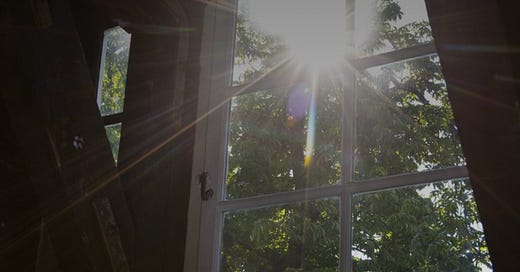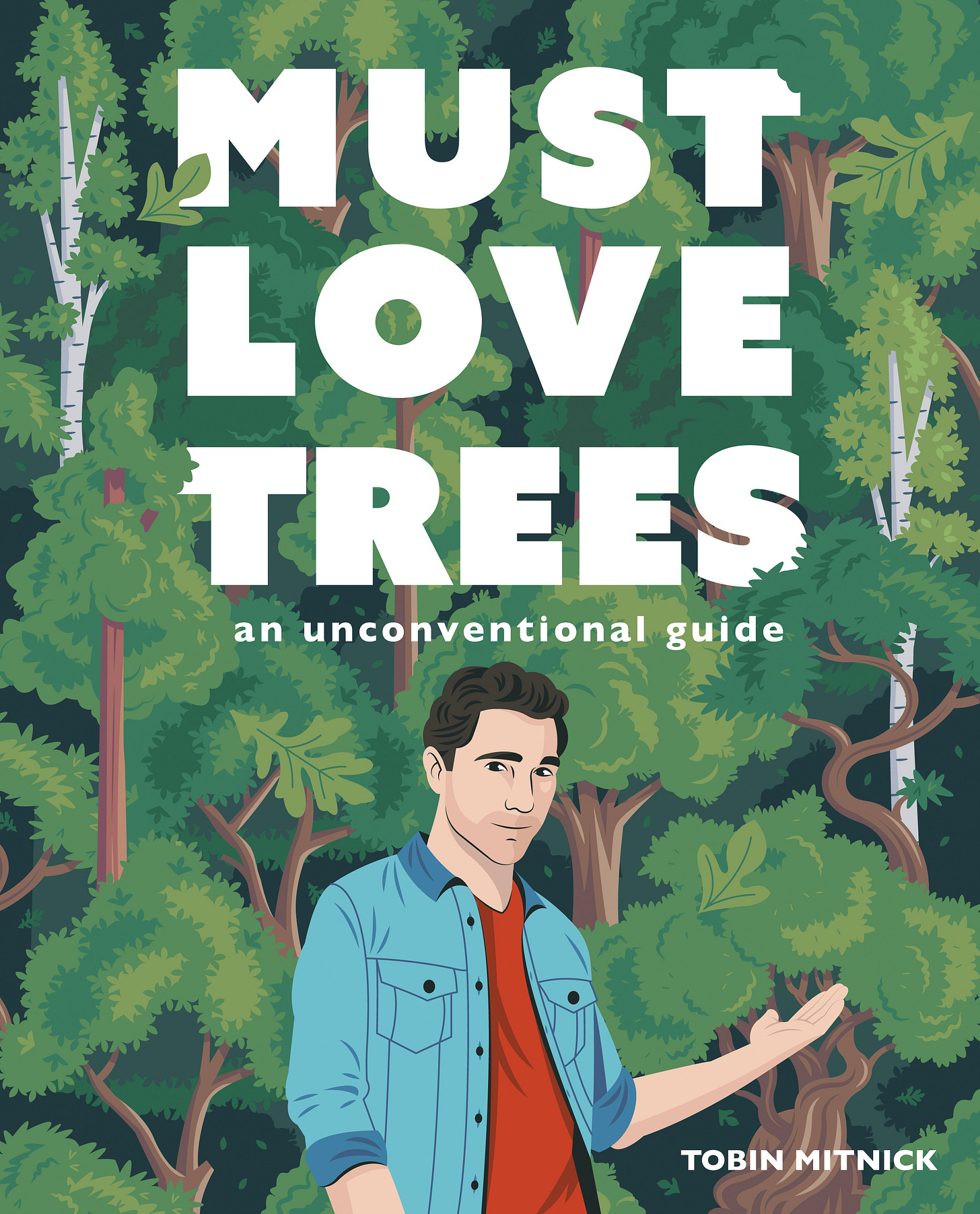Sorry I’ve been gone a long time from the newsletter. I’m gearing up for the release of my book in April (you can read an out-of-context sentence from it at the bottom of the page) and my second child in March, and it’s been a lot of logistics. I can only suspect that it will get logistics-ier. Helping me on this journey is Libby Oren, the JewsLoveTrees intern, who can seemingly do anything. You can read more about her on her bio page for GetLit, a youth literacy organization in Los Angeles with whom Libby writes and performs as a poet.
Ok, everyone. We all know what day it is.
February 5-6 is Tu B’shvat, the holiday on the Jewish calendar that celebrates trees. It comes from the Mishnah, which was a written collection of Jewish oral traditions jotted down in the first few centuries of the first millennium C.E. Or A.D., if that’s your bag. Which is fine, because the phrase “Anno Domini”, I'm sorry to say, absolutely slaps.
Tu B’shvat can be celebrated in many different ways.
A lot of the time, especially in Jewish circles online, Tu B’shvat is a common time to invoke the concept of Tikkun Olam, which refers to the Jewish concept of “repairing a broken world.” Trees as tools, trees as saviors, trees as deliverance. Trees as glue, trees as justice, trees as white blood cells. Trees as shields. Trees as swords. That’s the modern understanding of trees in connection with Tikkun Olam, and it’s not wrong. Trees have been conscripted into our battle for the planet as front-line soldiers. This is the outward-facing view of the holiday, and it’s necessary stuff.
But I often feel very heavy on Tu B’shvat. It’s the same feeling I have on my birthday. When everyone else is doing the thing I do every day—be it celebrating trees or acknowledging my age—I generally turn inward. I’m sure many of you can relate. It’s easier on days like that to think about what trees mean in a more internal way than the superhero role into which they’ve been thrust these past few years.
So rather than writing about what Tu B’shvat means as an ecological holiday, or a Kabbalistic tradition, or a call to arms against impending destruction, I want to talk about how a young person connected with the only tree she had, and why that meant just as much to the world as trees on the front lines.
The so-called Anne Frank Tree fell in 2010. It was a White Horse Chestnut, nearly two hundred years old, and it grew adjacent to the annex in which Frank and her family were confined in Amsterdam for more than two years. I need not recount the entirety of their circumstances, but suffice to say that Anne’s confinement made her exposure to nature virtually non-existent.
That is, with the exception of the window in the attic, where she would often lay on the floor and write.
In the last few months of her confinement, Anne began more frequently to meditate on the Horse Chestnut.
It must have been hard not to. Horse Chestnuts (Aesculus hippocastanum) are extremely visually arresting. They dot the landscapes of major European cities from Paris to Kyiv, their great pads of foliage made up of thousands of heptads of compound leaves radiating from a central point, palmately. In the spring, they are adorned with towering white flowers, like a million cathedrals popping up all over the soft green outline. Their wood is poor for construction and prone to rot and their crop of chestnuts is toxic, which makes their aesthetic appeal their prime one. Ludwig Bemelmans had a preoccupation with Horse Chestnuts and used them as the prime nature signifier of Paris in his Madeline books. They’re deeply ensconced in the psyche of the European continent.
So it was merciful that a magnificent White Horse Chestnut, and not, say, a boring old Norway Maple, grew outside Anne Frank’s window. The closest branches were no more than five or six feet away. It must have been painful to be so near to the great, inviting leaves of the Horse Chestnut and be physically barred from touching them.
The first time the tree appears in the text of her diary, on February 23, 1944, we witness a remarkable change happen within Anne through her writing. She shares a silent experience with Peter van Pels, with whom she is developing a deep friendship, as they allow the fragmentary world outside to subsume the cavernous world within the annex:
“The two of us looked out at the blue sky, the bare chestnut tree glistening with dew, the seagulls and other birds glinting with silver as they swooped through the air, and we were so moved and entranced that we couldn’t speak.”1
The wintering branches of the Horse Chestnut created a sieve through which Anne viewed the earth, like a theatre’s proscenium. The Horse Chestnut is no mere feature of an unattainable world—it’s the redeeming natural context through which Anne witnessed the human tragedy unfolding around her:
“I also looked right out the open window, letting my eyes roam over a large part of Amsterdam, over the rooftops and on to the horizon, a strip of blue so pale it was almost invisible.”
Anne undergoes a transformation as she writes this entry, perhaps for the first time seeing Peter not as a potential romantic interest or a receptor for her well of feelings, but as an independent soul. Bathing in the spell of the Horse Chestnut, Anne sees Peter apart from herself:
“…by the time he had to go to the loft to chop wood, I knew he was a good, decent boy.”
Peter was sensitive to the same cast of romantic sublime as she, even from a tiny window with an inaccessible, barren tree. Anne sees this poetic inclination in herself as good and decent. Then she sees it in Peter with the same understanding.
Anne lets loose a torrent of a budding naturalist’s optimism in the next few paragraphs, like a hiker high on mountain air…
“As long as this exists…how can I be sad?”, “The best remedy for those who are frightened, lonely or unhappy is to go outside…”, “I firmly believe that nature can bring comfort to all those who suffer…”
…until she reaches the final sentence of the day, a private plea to Peter to remember the magic shared between them that day:
“Whenever you’re feeling lonely or sad, try going to the loft on a beautiful day and looking outside. Not at the houses and the rooftops, but at the sky…”
She ends:
“…as long as you can look fearlessly at the sky, you’ll know that you’re pure within and will find happiness once more.”
This is written by a fourteen year-old.
In her previous entry, Anne recounted the excruciating mundanity of cleaning day in the secret annex. But in this one, she’s prescribing a panacea for the broken-hearted.
The power of the White Horse Chestnut.
For those of you who are wondering what became of Anne Frank’s White Horse Chestnut, its seeds have traveled the world as botanical goodwill ambassadors and its progeny are healthy.
The location of the wood and branches of the tree itself, however, are a genuine mystery to me after many hours of internet research and jotting down terms like “Support Anne Frank Tree Foundation,” “Arnold Heertje,” “Wereldbloom Foundation,” and “Rob van der Leij”.
(By the way, if anyone knows where there’s a secret locker full of decaying wood of the Anne Frank Tree, let me know, as I’d love a piece of it to tell my grandkids all about how so many untold dreams can spring from a piece of wood.)
But I hope that this diary entry and this epiphanical day in the tragically short history of a young person’s life has shown you that Tu B’shvat, the Jewish tree holiday, can also be about repairing our broken worlds within.
And, as the saying goes, if you repair one broken world, you repair the world entire.
Happy Tu B’shvat,
Tobin
An Out-of-Context Sentence from Must Love Trees: An Unconventional Guide
Page 64:
I called to the Tree Gods, “Tree Gods! Give me leave for one afternoon that I might return to the city, to tell the people of my exploits, and to feel the warmth of a common smile!”
Pre-order from:
All quotes from Frank, Anne. The Diary of a Young Girl: the Definitive Edition. New York: Bantam Books, 2001, pp. 212-214.






Chag Sameach!
Thanks for that.